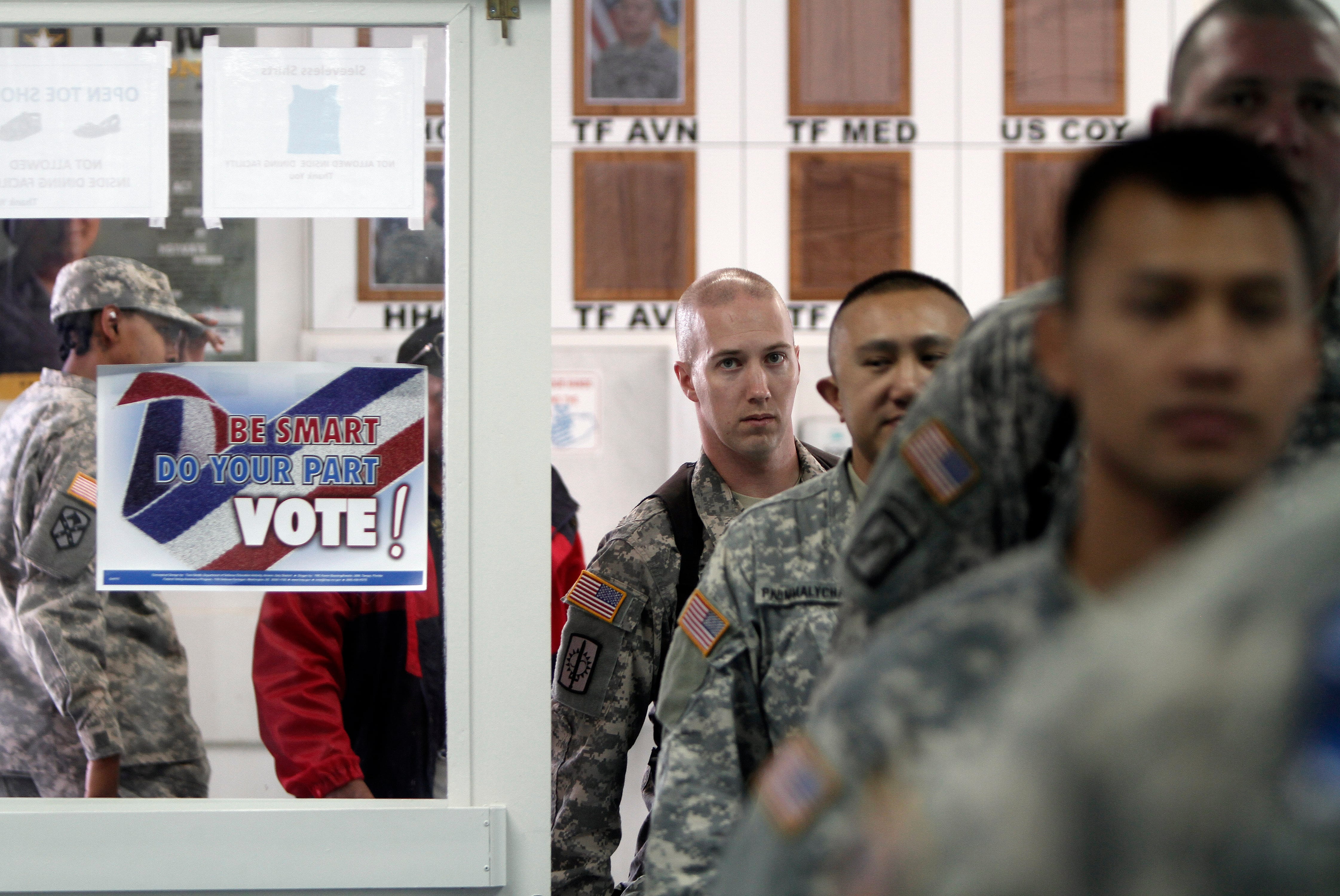Marines advisers embedded with Afghan troops near the front of the fight against the Taliban are not engaging in direct combat, according to the top Marine.
The comments from Marine Commandant Gen. Robert B. Neller Thursday at the Atlantic Council counter common perceptions that American military advisers in Afghanistan are directly involved in daily combat operations against the Taliban.
Those perceptions were heightened when Gen. John Nicholson, the commander of U.S. forces in Afghanistan, recently spearheaded a plan to have U.S. forces embedded at the battalion or kandak level. Previously, military advisers worked at the brigade level.
“Our involvement in the day to day tactical activities of the Afghans is minimal,” Neller told audience members at a defense strategy discussion Thursday. “We are not at the point of contact.”
A nearly 300 Marine unit known as Task Force Southwest is deployed to one of the bloodiest and volatile provinces known as Helmand, Afghanistan.
That task force is currently on its second rotation and after almost a year of advising local Afghan forces. None of the Marines have been engaged in any direct combat or received a combat action ribbon.

That is despite that the new rotation, which arrived in mid-January, has been carrying out advising missions at the battalion level, according to Lt. Kathleen Kochert, a spokeswoman for the Marine task force, putting Marines closer to the action.
Capt. Aaron Reep, a Marine adviser with task force, told Marine Corps Times Wednesday, “Task Force Southwest has not directly engaged in combat while advising at the brigade or kandak level, but we have assisted the Afghan National Defense & Security Force (ANDSF) with direct fires while they were engaged with the enemy.”
Marines assisting Afghan forces have aided partner Afghan forces with air and artillery strikes.
“We are facilitating them doing the fighting,” Neller said at the Atlantic Council.
Despite the lack of combat action for the Marines in Helmand, they’ve been quite busy retooling and training Afghan forces in their efforts to drive back recent Taliban gains.
“Task Force Southwest continues to directly contribute to combat operations in their advising capacity across the warfighting functions,” Reep said. “These efforts assist the ANDSF in generating combat power against the enemy and contribute to the ANDSF’s ability to successfully maneuver against the enemy.”
The Marines have been prepping Afghan forces with training and advanced skill sets that will enhance combat power on the battlefield.
RELATED

The advisers have a two-month infantry training package that is like “a hybrid of the Marine Corps’ School of Infantry and an infantry battalion’s basic skills package,” Reep explained.
The Corps has also been training Afghans on signals intelligence equipment to include a system called the Wolfhound Handheld Threat Warning System. This system can intercept basic radio communications and uses direction finding to help pinpoint enemy forces.
There has been a slight switch in priorities between the two Task Force Southwest rotations.
The first rotation spearheaded efforts with their Afghan counterparts to create a security bubble around the embattled province’s provincial capital of Lashkar Gah, which involved retaking the village of Nad Ali.
The new rotation has focused much of its efforts “engaged in targeting Taliban leadership in Helmand to degrade the enemy’s command and control prior to the start of the traditional fighting season,” Reep said.
Though, with parliamentary elections around the corner, Afghan forces are gearing up for major combat operations, according to Reep.
The advising missions being carried out by the Marines are “having some success,” Neller said.
But political reconciliation efforts to bring the Taliban into the fold are vital to the country ending the bloodshed, Neller explained.
“You are not going to fight this thing forever,” he said. “You can’t live in a constant state of war.”
Shawn Snow is the senior reporter for Marine Corps Times and a Marine Corps veteran.




